Last updated on
Discover the essentials of a Kosher kitchen layout, designed to maintain strict dietary guidelines while maximizing functionality and efficiency in your cooking space.
Are you planning to renovate your kitchen but don’t know where to start? If you’re Jewish or have Jewish friends and family, you may have heard the term “kosher kitchen” before. But what exactly does it mean? A kosher kitchen is a space designed for observant Jews who follow dietary laws that dictate what foods can and cannot be consumed.
The layout of a kosher kitchen is crucial in maintaining its cleanliness and ensuring that utensils and appliances are used properly. In this article, we’ll dive into the details of what makes a kosher kitchen layout unique and how it can benefit anyone looking to create an organized and functional space in their home.
Key takeaways:
- Separate spaces for meat and dairy preparation
- Use of color-coding for utensils and storage containers
- Dedicated sinks, dishwashers, and countertops for meat and dairy
- Separate utensils and appliances for meat and dairy
- Proper organization and labeling of food storage areas
What's Inside
Kosher Kitchen Defined

The term “kosher” means “fit” or “proper,” and refers to food that meets specific requirements for preparation, cooking, and consumption. In a kosher kitchen, all utensils used for preparing meat must be separate from those used for dairy products.
There are strict guidelines regarding the use of appliances such as ovens and refrigerators in order to prevent cross-contamination between meat and dairy items.
The layout of a kosher kitchen is crucial in maintaining its cleanliness while ensuring that utensils are not mixed up between meat-based dishes versus dairy-based ones. A well-designed Kosher Kitchen will have separate areas designated specifically for the preparation of each type of food item (meat vs milk).
This separation extends beyond just countertops but also includes sinks where washing takes place.
Kosher Dietary Laws

These laws are based on the Torah and have been followed for thousands of years. The basic principle behind kosher dietary laws is to maintain separation between meat and dairy products.
This means that meat and dairy cannot be cooked or consumed together in any form.
In addition to this fundamental rule, there are other restrictions on certain types of animals that can be eaten (only those with cloven hooves who chew their cud), how they must be slaughtered (with a sharp knife in a specific way), which parts may not be eaten (such as blood or certain fats) among others.
Observing these rules requires careful attention to detail when preparing food at home or eating out at restaurants. For example, utensils used for cooking meat cannot come into contact with those used for cooking dairy products unless they have been properly cleaned according to kosher standards.
Importance of Separate Spaces
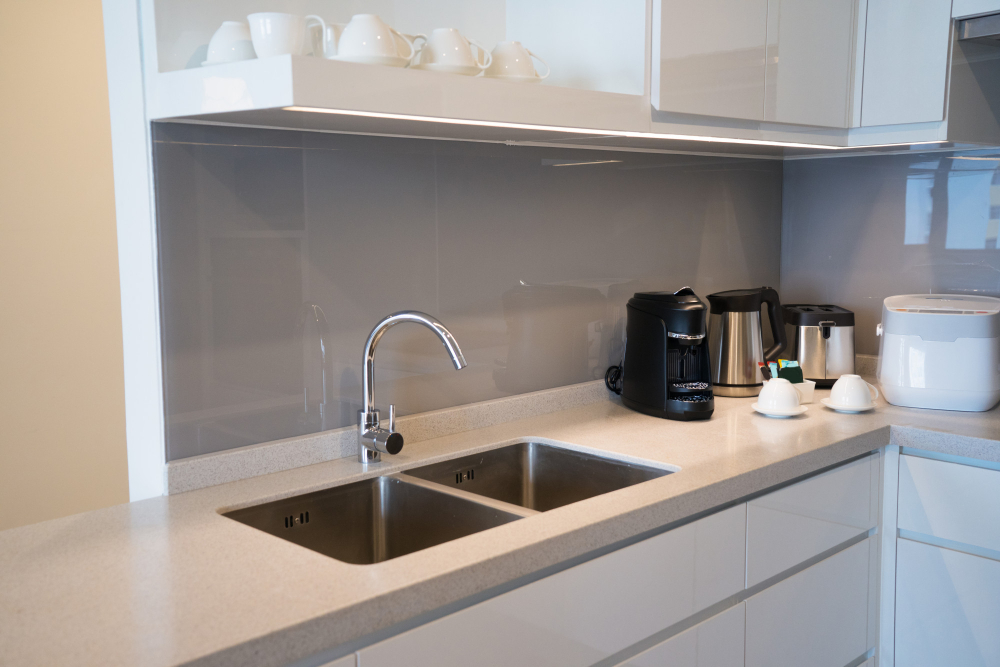
This separation is based on the Jewish dietary laws that prohibit mixing meat and dairy products in any form. The Torah instructs Jews not to “cook a kid in its mother’s milk,” which has been interpreted as forbidding the consumption of any combination of meat and milk.
To maintain this separation, kosher kitchens typically have two sinks, two dishwashers, two sets of utensils (one for meat and one for dairy), separate cookware (pots, pans) designated exclusively for either type of food product. There are often different countertops or workstations dedicated solely to preparing either type of food.
The importance of having these separate spaces cannot be overstated since even accidental mixing can render an entire meal non-kosher. For example: if you use a knife that was previously used on raw chicken when cutting cheese or vegetables without washing it first thoroughly with soap & water – then your vegetarian dish will become non-kosher due to cross-contamination from the chicken residue left behind on the knife.
Sink and Countertop Considerations
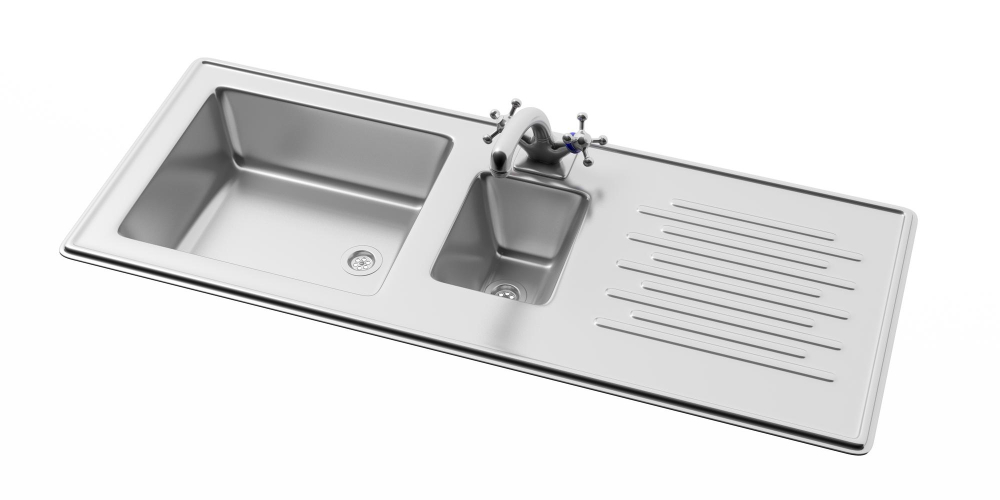
The sink should be made of stainless steel or another non-porous material that can be easily cleaned and sanitized. It’s also essential to have separate sinks for meat and dairy preparation to avoid cross-contamination.
Countertops should also be non-porous, such as granite or quartz, which makes them easy to clean thoroughly after each use. Kosher kitchens require separate countertops for meat and dairy preparation as well.
Another consideration is the placement of these items in your kitchen layout. Ideally, they should not share a wall with one another so that there is no chance of splashing water from one area onto utensils or appliances used in the other area.
Separation of Utensils and Appliances

This means that utensils and appliances used for cooking or serving meat cannot be used for dairy, and vice versa. To ensure this separation is maintained, many kosher kitchens have two sets of everything – one set designated for meat use only, the other set designated for dairy use only.
For example, if you’re making chicken soup in a pot that has been previously used to cook beef stew (a non-kosher combination), the soup would not be considered kosher. Similarly, using the same knife to cut cheese after cutting raw chicken could contaminate both items.
To avoid these issues in your kitchen layout design plan on having separate drawers or cabinets dedicated solely to storing utensils such as knives forks spoons etc., pots pans dishes glasses cups bowls etc., so they don’t get mixed up with each other.
When it comes to appliances like blenders or food processors which can’t easily be separated into different parts based on their intended usage (meat vs. Dairy), some people choose either not using them at all in their Kosher Kitchen while others opt-in buying two of each appliance – one labeled “meat” and another labeled “dairy.”.
Kosher Refrigerator Organization
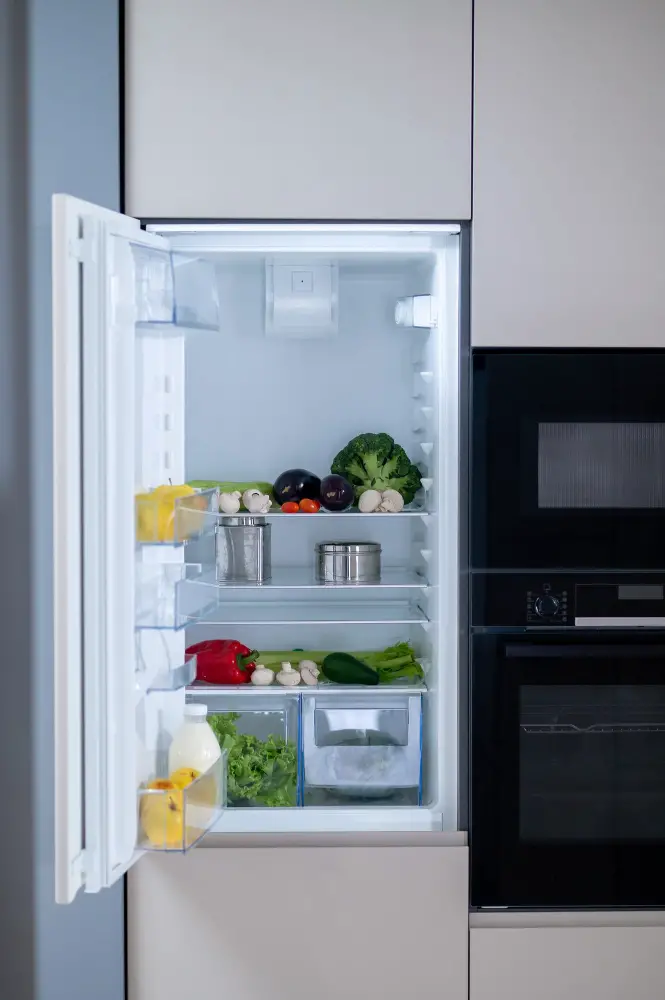
It’s essential to keep meat and dairy products separate, so it’s crucial to have designated areas for each type of food in your fridge. One way to do this is by using color-coded containers or labels that indicate which items are meat and which are dairy.
You can also use separate shelves or drawers for each category.
Another option is to have two refrigerators – one exclusively for meat products and another solely for dairy items. This approach ensures that there will be no cross-contamination between the two types of food.
When organizing your kosher refrigerator, it’s also important to pay attention to expiration dates and regularly check what needs restocking or throwing away. Keeping a clean fridge not only helps maintain its functionality but also promotes good health practices in your home.
Color-Coding for Kosher Kitchens

It helps to prevent cross-contamination between meat and dairy products, which is strictly prohibited in Jewish dietary laws. Color-coding involves assigning specific colors to utensils, cutting boards, dish towels, and other items used for either meat or dairy preparation.
For example, red can be designated for meat while blue can be assigned for dairy. This way you will always know which items are safe to use when preparing food without the risk of mixing them up.
It’s important to note that color-coding should also extend beyond just the kitchen tools but also include storage containers and labels on packaged foods in your pantry or refrigerator.
Oven and Stovetop Options
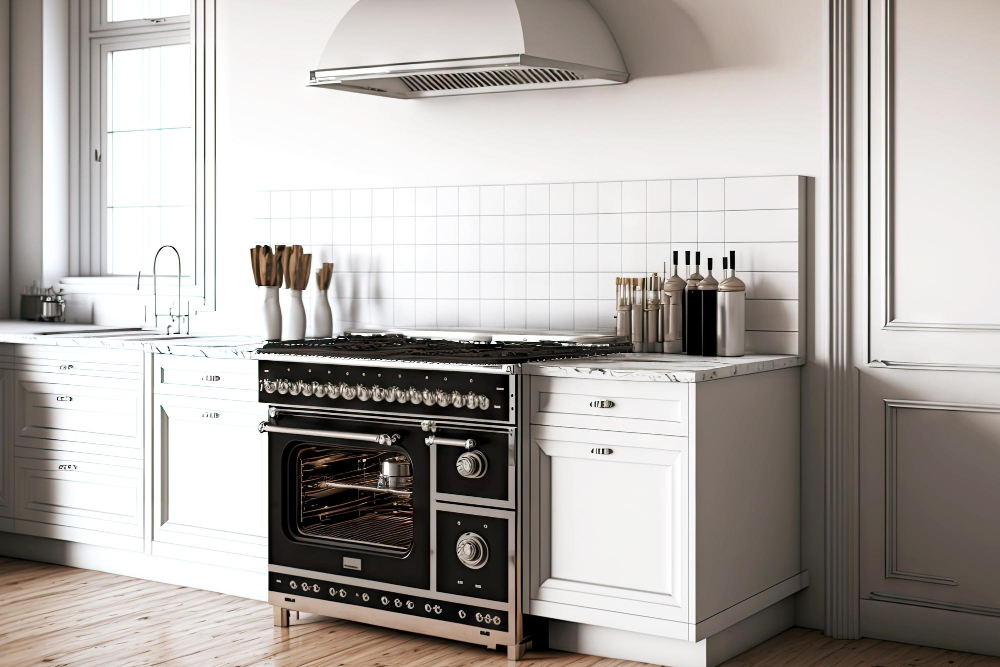
First and foremost, it’s important to have separate ovens for meat and dairy products. This means that if you’re cooking a meat dish, you should use the designated meat oven only.
The same goes for dairy dishes – they should be cooked in the designated dairy oven.
In addition to having separate ovens, many kosher kitchens also feature two sets of burners on their stovetops – one set for meat dishes and another set for dairy dishes. This ensures that there is no cross-contamination between the two types of food.
Another option is using induction cooktops instead of traditional gas or electric burners since they don’t emit heat directly from their surface but rather through magnetic fields which heat up pots placed on them without heating up themselves or anything else around them.
Dishwasher Guidelines
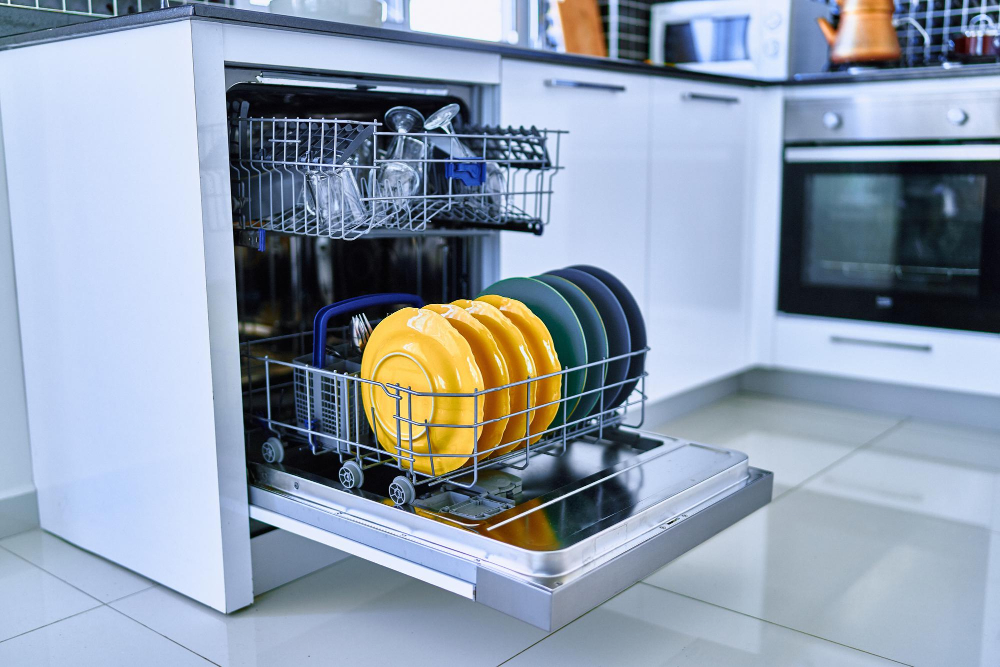
In order to keep dishes and utensils separate and avoid any cross-contamination between meat and dairy products, it’s important to follow specific guidelines when loading the dishwasher.
Firstly, make sure you have two sets of dish racks for your dishwasher – one for meat items and another for dairy items. This will help prevent any mixing of utensils or plates during cleaning.
Secondly, be mindful of how you load each rack. Meat dishes should always be loaded in the bottom rack while dairy dishes should go on top.
If there are not enough dirty dishes from one category to fill up a full load in either section, wait until more accumulate before running the cycle.
Lastly, ensure that all food particles are removed from each item before placing them into their respective racks as leftover food can cause contamination issues even within their designated sections.
Food Storage Solutions

This means that you’ll need designated storage areas for each type of food. One solution is to have two refrigerators: one for meat and the other for dairy.
If space is an issue, consider using color-coded labels or stickers on shelves and drawers to differentiate between the two.
Another option is to use separate compartments within a single refrigerator or freezer unit. Some models come with built-in dividers that allow you to store meat on one side and dairy on the other without any risk of cross-contamination.
If you’re short on space, consider investing in stackable containers or bins that can be easily labeled as either “meat” or “dairy.” These containers are great because they can be stored in cabinets when not in use, freeing up valuable counter space.
Labeling for Kosher Items

It helps to ensure that all food items are correctly identified and stored in their designated areas, preventing any confusion or cross-contamination. In a kosher kitchen, it’s crucial to label everything from spices and condiments to meat and dairy products.
One way to make labeling easier is by using color-coded stickers or labels for different categories of food items. For example, red can be used for meat products while blue can be used for dairy products.
This method makes it easy at a glance which foods belong where.
Another option is using clear containers with labeled lids so you can see what’s inside without having to open them up every time you need something.
It’s also important not just the label but also the date when each item was purchased or prepared as some foods have expiration dates that must be adhered too strictly in Kosher kitchens.
Meat and Dairy Preparation Areas

This means having designated areas for preparing each type of food. The Torah prohibits cooking or consuming meat and dairy together, so it’s crucial to have separate utensils, dishes, cookware, and appliances for each category.
When designing your kosher kitchen layout, consider creating two distinct workstations: one for meat preparation and another for dairy preparation. These stations should be located on opposite sides of the room with ample counter space in between them.
It’s also important to have separate sinks dedicated exclusively to either meat or dairy use. If you only have one sink in your kitchen design plan that will be used by both categories of food items at different times during the day (for example when washing hands), make sure you clean it thoroughly before switching from one category of food item to another.
Kosher Cooking Techniques

The preparation and cooking of food must adhere to strict guidelines that ensure the separation of meat and dairy products. For example, separate utensils, cookware, and appliances should be used for meat dishes versus dairy dishes.
There are specific ways to prepare certain foods such as soaking vegetables in saltwater or removing blood from meats before cooking.
Another important aspect is the use of kosher ingredients only; this means that all ingredients must have been prepared according to Jewish dietary laws. This includes checking fruits and vegetables for insects or using only certified kosher meats.
It’s also crucial to note that when preparing food in a kosher kitchen, it’s not just about following rules but also about creating delicious meals with care and intentionality while respecting tradition.
Cleaning and Maintenance Tips

Regular cleaning is essential to prevent cross-contamination between meat and dairy products, which can render them non-kosher. Here are some tips for keeping your kosher kitchen clean:
1. Clean as you go: Wipe down surfaces after each use, wash dishes immediately after meals, and sweep or vacuum the floor daily.
2. Use separate sponges: Keep two different sponges – one for meat dishes and another for dairy – to avoid mixing them up.
3. Label everything: Clearly mark all containers with their contents (meat/dairy/pareve) so that there’s no confusion about what goes where.
4. Deep clean regularly: Schedule a deep cleaning of your entire kitchen at least once every few months or more frequently if needed.
5. Check expiration dates: Make sure all food items are within their expiration date before using them in cooking or baking.
Kosher Certification

It ensures that all the food products and ingredients used in the kitchen are prepared according to Jewish dietary laws. Kosher certification agencies inspect and certify food production facilities, ensuring that they meet strict standards for cleanliness, ingredient sourcing, and preparation methods.
When designing your kosher kitchen layout, it’s important to consider using only certified kosher products. This includes everything from meat and dairy products to packaged foods like snacks or condiments.
Many grocery stores carry a wide range of certified kosher items; look for symbols such as “OU” (Orthodox Union) or “OK” (Kosher Supervision Service) on packaging labels. You can also find lists of approved brands online through various organizations’ websites.
Benefits of a Kosher Kitchen

For one, it promotes cleanliness and organization in the kitchen. By separating meat and dairy products, utensils, appliances, and workspaces are kept clean from cross-contamination.
This not only ensures that food is prepared according to dietary laws but also reduces the risk of foodborne illnesses.
Another benefit of a kosher kitchen is its efficiency in meal preparation. With separate spaces for meat and dairy cooking areas as well as designated storage areas for each type of product, you can easily find what you need when preparing meals without wasting time searching through cluttered cabinets or drawers.
A kosher kitchen design can increase your home’s resale value since it appeals to potential buyers who follow Jewish dietary laws or those who appreciate an organized space with clear separation between different types of foods.
Kosher Kitchen Design Tips
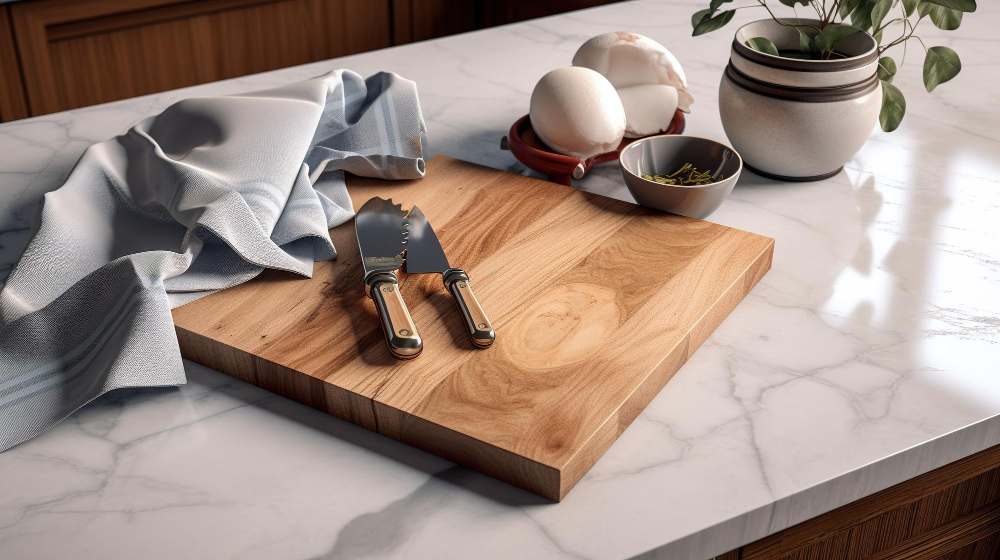
First and foremost, it’s essential to have separate spaces for meat and dairy preparation. This means having designated areas for cutting boards, utensils, appliances such as blenders or mixers, and even sinks.
Another crucial aspect of kosher kitchen design is color-coding. By using different colors for meat and dairy items (such as red for meat and blue for dairy), you can easily keep track of which items belong in which area.
In addition to these practical considerations, aesthetics also play a role in creating an inviting space that reflects your personal style while adhering to the guidelines of a kosher kitchen layout.
Making Your Kitchen Kosher-Ready

First and foremost, it’s essential to thoroughly clean your kitchen before beginning any renovations or changes. This includes removing all non-kosher items from the space and cleaning every surface with hot water and soap.
Next, consider implementing separate spaces for meat and dairy preparation areas. This can be achieved through designated countertops or even separate rooms if possible.
Another important aspect of creating a kosher-ready kitchen is investing in appropriate appliances such as two dishwashers, ovens with self-cleaning features that reach high temperatures (to kasher them), sinks with multiple basins (for separating meat/dairy dishes), etc.
Consult an experienced designer who specializes in Kosher kitchens design so they can help guide you through the process of making sure everything is up-to-code according to Jewish dietary laws while still maintaining functionality within your cooking area.
Hiring a Kosher Kitchen Designer

A professional designer will have the knowledge and expertise necessary to ensure that your kitchen meets all of the requirements for a kosher space while still being functional and aesthetically pleasing. When looking for a designer, it’s important to find someone who has experience designing kosher kitchens specifically.
They should also be familiar with Jewish dietary laws and understand how they impact kitchen design.
A good place to start is by asking friends or family members who have already gone through this process if they can recommend anyone. You can also search online for designers in your area who specialize in creating kosher kitchens.
When meeting with potential designers, make sure you ask plenty of questions about their experience working on similar projects as well as their understanding of Jewish dietary laws. It’s essential that you feel comfortable communicating openly with them so that they fully understand your needs and preferences.
Common Mistakes in Kosher Kitchen Layout
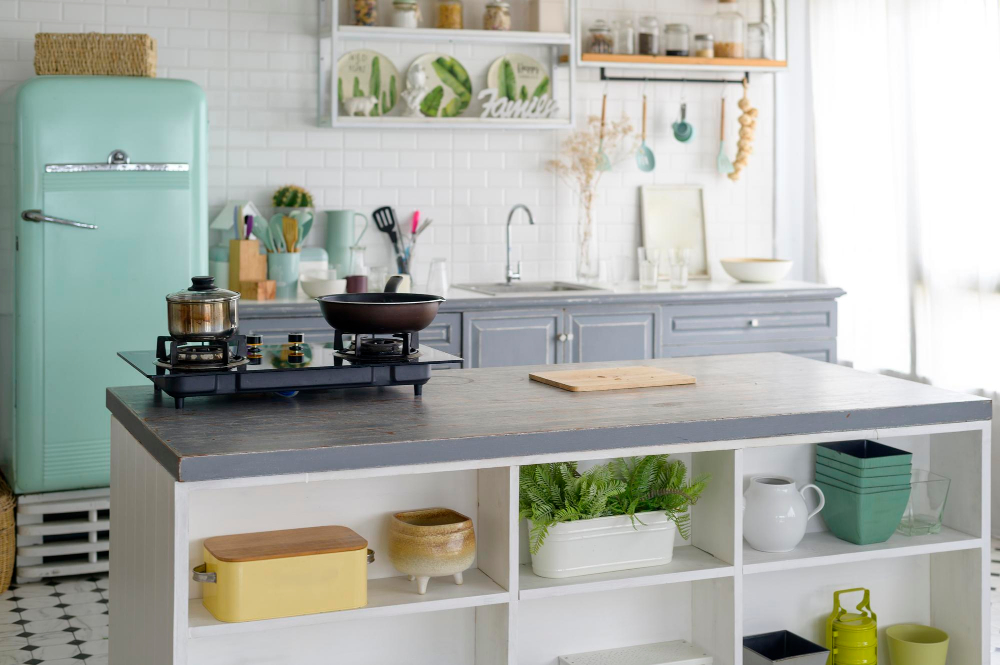
One of the most significant errors is not separating meat and dairy areas properly. It’s essential to have separate countertops, sinks, utensils, and appliances for meat and dairy products to avoid cross-contamination.
Another mistake is not having enough storage space or cabinets in the kitchen. A cluttered kitchen can lead to confusion about which items are kosher or non-kosher.
Some people overlook color-coding their utensils and dishes according to their use (meat/dairy/pareve). This simple step can help prevent accidental mixing of different types of food.
Lastly, failing to consult with an experienced designer who understands the intricacies of a kosher kitchen layout could result in costly mistakes that may require expensive renovations later on.
Kosher Kitchen Design With 2 Full Kitchens
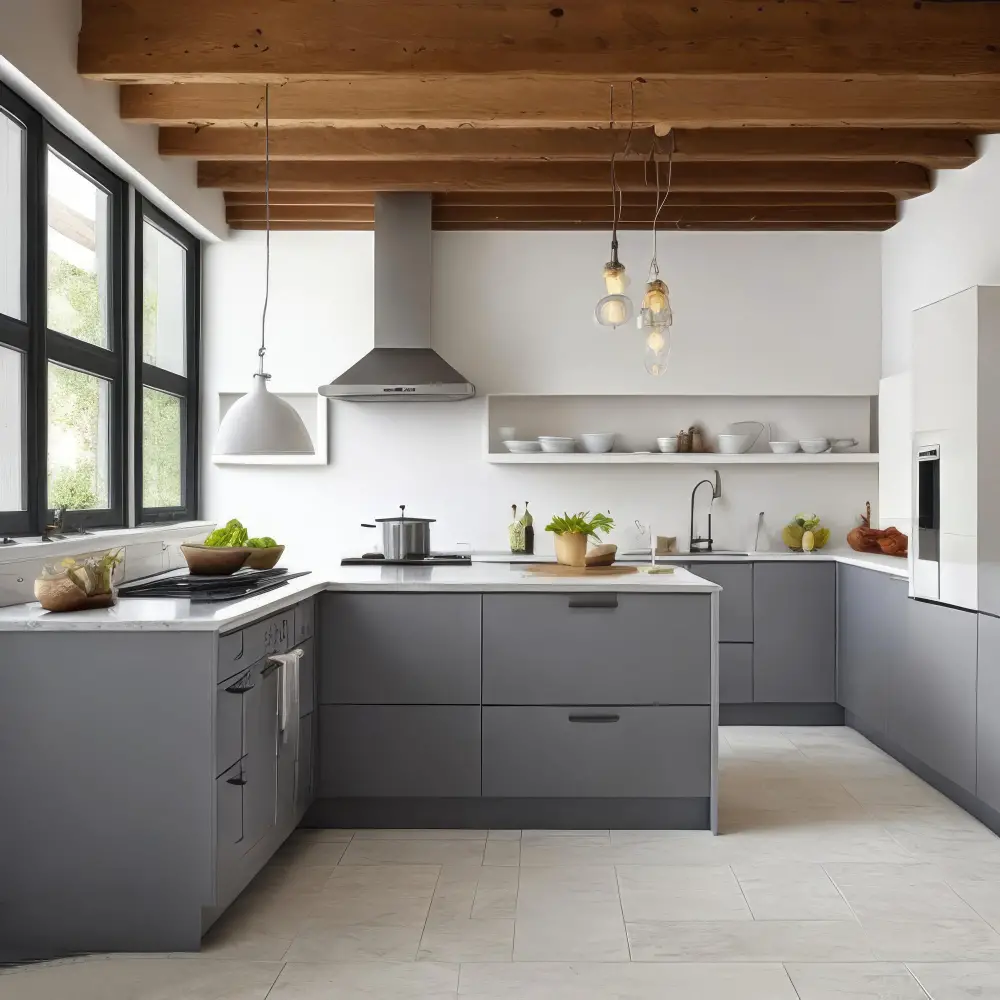
This layout allows for complete separation of meat and dairy preparation areas, including separate sinks, ovens, stovetops, refrigerators and dishwashers. With this setup in place there is no need to worry about cross-contamination or accidentally mixing meat and dairy utensils.
The main kitchen can be used for everyday cooking while the second one is reserved exclusively for preparing kosher meals. The secondary kitchen may also include additional appliances such as a deep fryer or griddle that are not typically found in non-kosher kitchens.
While having two full kitchens may seem excessive to some people it’s important to remember that keeping Kosher isn’t just about following dietary laws but also maintaining spiritual purity through cleanliness. A well-designed Kosher Kitchen will help you achieve both goals without sacrificing style or functionality.
If you’re considering designing your own Kosher Kitchen with 2 Full Kitchens make sure to work closely with an experienced designer who understands all of the unique requirements involved in creating this type of space.
Small Kosher Kitchen Designs
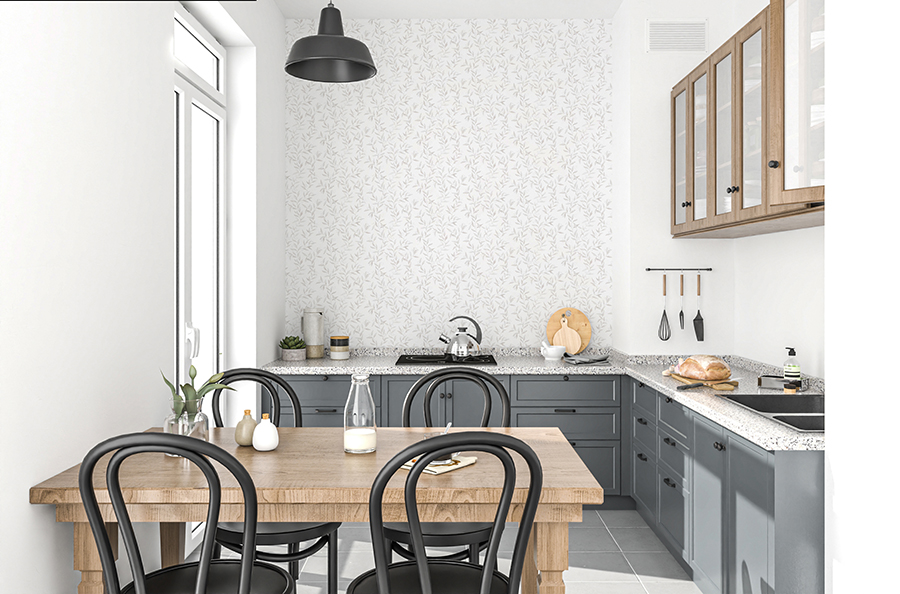
The key is to maximize every inch of space while keeping the dietary laws in mind. One way to do this is by using multi-functional appliances that save counter space, such as an oven with built-in microwave or a refrigerator with pull-out drawers for easy access.
Another tip for small kosher kitchens is to use vertical storage solutions like hanging pot racks or wall-mounted shelves. This will free up valuable cabinet and countertop space while keeping your utensils and cookware within reach.
When it comes to color-coding in smaller kitchens, consider using labels instead of separate sets of dishes and utensils. This will help you keep track of which items are meat-based versus dairy-based without taking up too much room.
Designing a small kosher kitchen requires careful planning but can be done successfully with the right tools and techniques.
Guidelines for a Kosher Kitchen Design
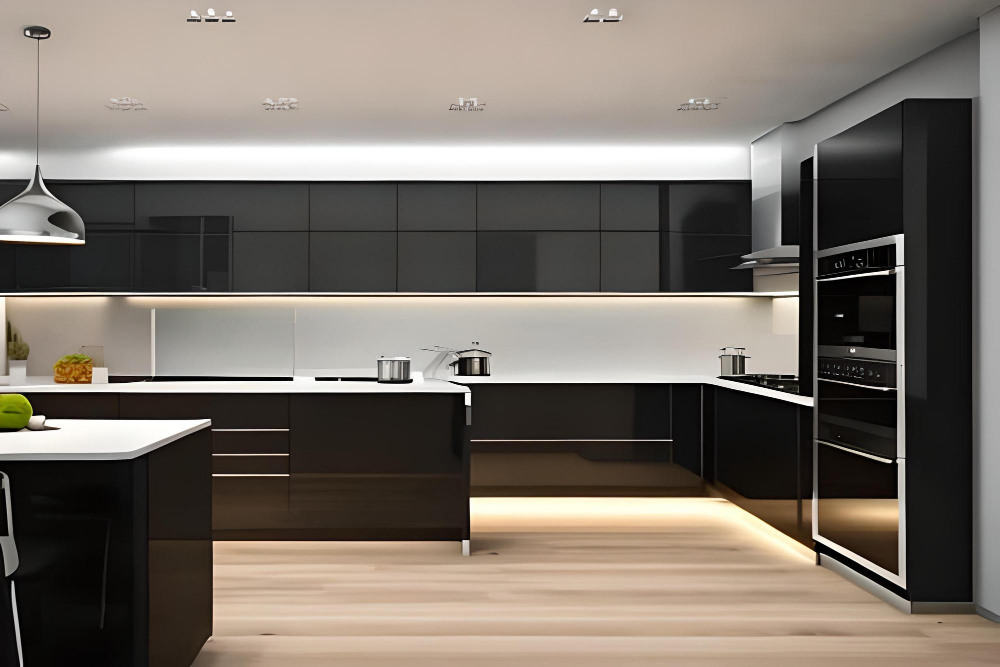
First and foremost, it’s essential to have separate spaces for meat and dairy preparation. This means having two sinks, two sets of dishes and utensils, two dishwashers (or one with separate compartments), and even separate ovens or stovetops if possible.
Another important consideration is the layout of your countertops. It’s best to have at least three distinct areas: one for meat preparation, one for dairy preparation, and a neutral zone where you can prepare foods that don’t fall into either category.
Color-coding is also crucial in a kosher kitchen design. Use different colored cutting boards or utensils for meat versus dairy products so that there is no cross-contamination between the two.
When selecting appliances such as refrigerators or dishwashers make sure they meet Kosher standards by being certified by an authorized agency like OU Kosher Certification Agency which ensures all components used during manufacturing are compliant with Jewish dietary laws.
Work With an Experienced Kosher Kitchen Design and Build Team

A professional designer who specializes in kosher kitchens will have the knowledge and expertise needed to create a space that meets all of your needs while adhering to strict dietary laws. They can help you choose the right materials, appliances, and layout for your kitchen based on your specific requirements.
An experienced design team can also guide you through the certification process if necessary. Kosher certification ensures that all food prepared in your kitchen meets strict standards set by Jewish law.
This involves regular inspections by a rabbi or other qualified individual who verifies that everything from ingredients to utensils are being used properly.
By working with an experienced kosher kitchen design and build team, you’ll be able to create a beautiful and functional space that not only looks great but also helps maintain important traditions within your family or community.
Find Every Opportunity to Create More Space in Your Kitchen

This is because the separation of meat and dairy products requires separate storage areas for each type of food. One way to maximize your kitchen’s space is by using tall cabinets that reach up to the ceiling.
These cabinets can be used for storing items that are not frequently used, such as holiday dishes or large serving platters.
Another way to create more space in your kosher kitchen is by incorporating pull-out drawers and shelves into your cabinetry design. These features allow you easy access without having to dig through cluttered cupboards or bend down low.
If you have an island in your kitchen, consider adding a sink with two basins so that one side can be designated for meat preparation while the other side can be designated for dairy preparation.
Take Advantage of Cabinet Design and Storage
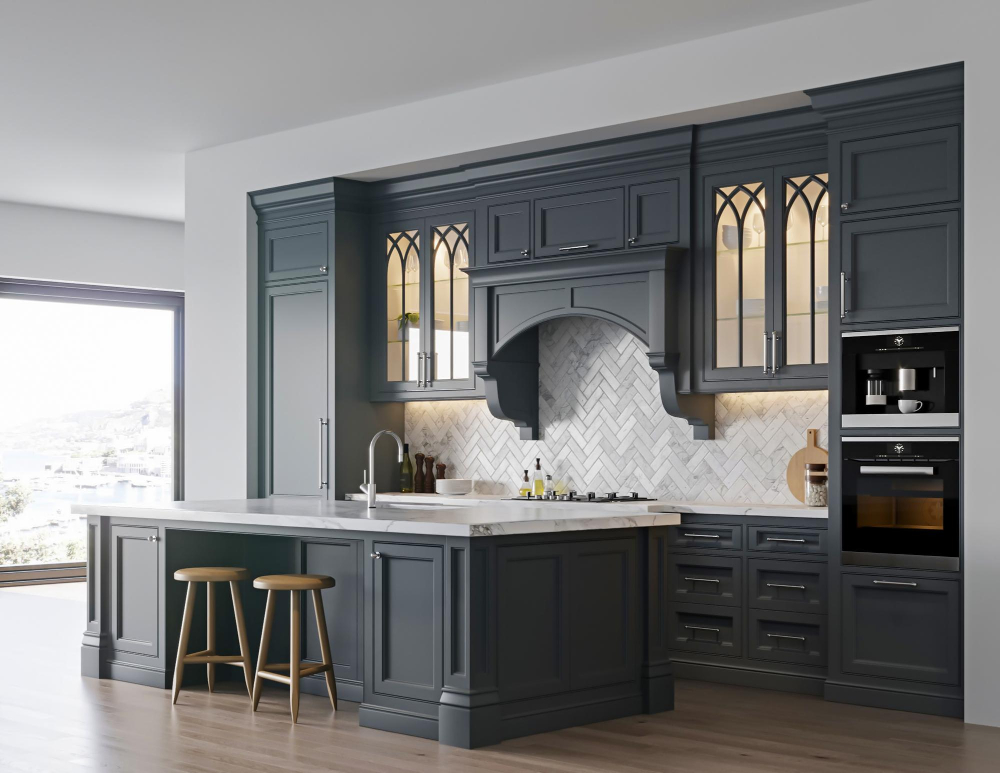
Cabinets play a crucial role in keeping everything organized and easily accessible. When designing your kosher kitchen cabinets, consider using pull-out drawers or shelves to maximize storage capacity while minimizing clutter.
Another great option is installing custom cabinetry with built-in dividers that separate meat from dairy products. This will help you avoid cross-contamination and ensure that each item has its designated spot in the kitchen.
If you have limited cabinet space, don’t worry! You can still make use of vertical spaces by adding open shelving or hanging racks on walls to store pots, pans, and other cooking tools.
Take advantage of every inch available in your kosher kitchen by incorporating smart cabinet design solutions such as pull-out drawers or shelves with built-in dividers for separating meat from dairy products.
Pay Special Attention to Kosher Appliances

Appliances that are not designed for kosher use can pose a risk of cross-contamination and render your kitchen non-kosher. Therefore, it’s crucial to select appliances that meet specific requirements.
For example, when choosing an oven or stovetop range for your kosher kitchen layout, consider purchasing one with separate burners or ovens designated specifically for meat and dairy products. This separation ensures there is no mixing of flavors between meat and dairy dishes.
Similarly, dishwashers should be selected carefully as they can also cause cross-contamination if not used correctly in a Kosher Kitchen Layout. A dishwasher must have separate racks designated solely for meat dishes and another set exclusively reserved only for dairy items.
Refrigerators are also important in maintaining the integrity of your Kosher Kitchen Layout since they store both raw ingredients as well as prepared meals; therefore having two refrigerators is ideal – one dedicated solely to storing meats while the other stores all other food types such as vegetables fruits etcetera.
Conscientious Materials Selection

The selection of materials should be conscientious and take into account the dietary laws that govern what can come into contact with food. For example, non-kosher wood or metal may not be suitable for use in a kosher kitchen if they have been previously used for cooking non-kosher foods.
To ensure that your kitchen is fully compliant with kosher guidelines, you’ll want to choose materials carefully. Stainless steel appliances are an excellent choice because they’re easy to clean and don’t absorb flavors or odors from previous meals.
For countertops, granite is often preferred due to its durability and resistance to stains. However, some types of granite may contain veins or patterns that resemble non-kosher meat products such as bacon strips which could make them unsuitable for use in a Kosher Kitchen.
Other popular countertop options include quartz composite surfaces like Caesarstone which are also durable but do not have any veining issues associated with natural stone surfaces like Granite. Flooring choices should also be made carefully since floors can harbor bacteria if not cleaned properly after spills occur during meal preparation; ceramic tiles are often recommended because they’re easy-to-clean while providing slip-resistant properties when wet.
All of the Kosher Kitchen Essentials
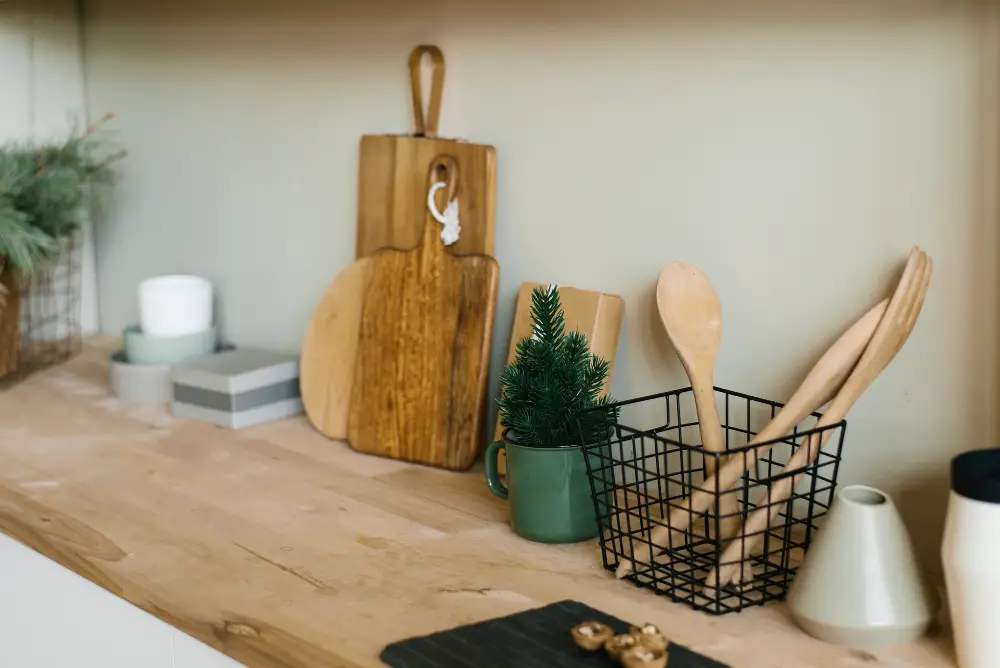
Here are some of the must-have essentials for any kosher kitchen:.
- Two sets of dishes, utensils, pots and pans – one for meat and one for dairy.
- Separate cutting boards – again, one set each for meat and dairy.
- A separate sink or two sinks with designated sides (one side is used exclusively for meat preparation while the other is used only to prepare dairy).
- Double ovens or an oven that can be easily kashered between uses.
- A dishwasher with separate racks or cycles designated specifically as “meat” or “dairy.”
- Color-coded labels to help keep track of which items belong in which category.
These are just a few examples of what you’ll need in your kosher kitchen arsenal; there may be additional items depending on your specific needs based on how strictly you observe Jewish dietary laws.
Kosher Kitchen Layout Using a Well-Equipped Butler’s Pantry

A butler’s pantry is essentially an extension of your kitchen, providing additional storage and prep space for all your cooking needs. In the context of a kosher kitchen, it can be especially useful in separating meat and dairy items while still keeping them within easy reach.
A typical butler’s pantry includes cabinets for storing dishes, glassware, serving pieces as well as appliances such as refrigerators or dishwashers. For those who keep strictly Kosher homes with two separate kitchens (one for meat preparation and one for dairy), having an extra refrigerator in the Butler’s Pantry can be very helpful.
When designing your Kosher Kitchen Layout using a Butler’s Pantry make sure to include ample counter space so that you have plenty of room to prepare food without feeling cramped or cluttered. You may also want to consider installing sinks on both sides of the countertop so that you can easily wash dishes without contaminating any utensils used during meal preparation.
Ready to Design Your Dream Kosher Kitchen?
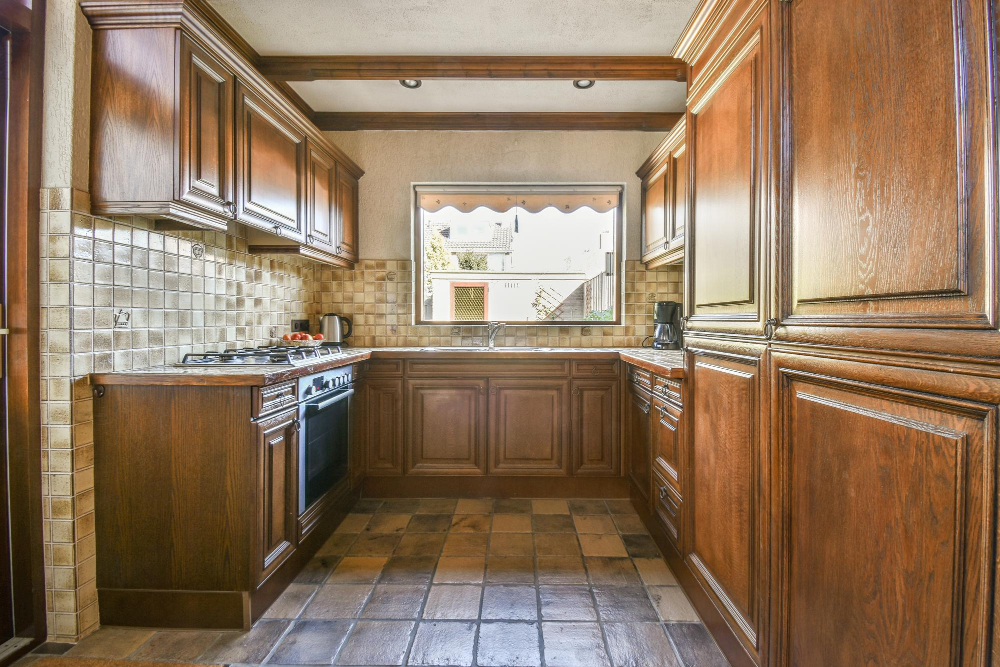
First and foremost, it’s important to work with an experienced designer who understands the unique requirements of a kosher kitchen layout. They can help you navigate the various guidelines and regulations while still creating a space that is functional and beautiful.
When designing your kosher kitchen, consider every opportunity for creating more space in your cooking area. This could mean incorporating additional cabinets or storage solutions into the design or even opting for two full kitchens if space allows.
Pay special attention when selecting appliances as they must be certified as “kosher” by reputable organizations such as OU (Orthodox Union) or OK (Kosher Supervision of America). Materials selection should also be conscientious; avoid porous surfaces like wood that may absorb food particles over time.
Don’t forget about all of the essential elements needed in any well-designed kitchen: ample counter space for meal prep; plenty of cabinet storage options; efficient lighting fixtures throughout each workspace area – these will make all aspects easier from cooking meals at home with family members down through cleaning up after dinner parties!.
FAQ
What makes a kitchen kosher?
A kosher kitchen requires two separate sets of utensils, one for meat and poultry and the other for dairy foods, including distinct pots, pans, plates, and silverware, unless the individual is a vegetarian and completely excludes meat.
What is a typical kosher kitchen?
A typical kosher kitchen is a space with larger storage units and drawers, designed to keep meat and dairy products separate during all stages of cooking, eating, and dish washing to avoid contact between them.
Does a kosher kitchen need two stoves?
Answer: Yes, a kosher kitchen typically needs two stoves to maintain the separation of meat and dairy according to kosher dietary traditions.
What are the key elements in designing a kosher kitchen layout?
Key elements in designing a kosher kitchen layout include separate areas for meat and dairy, designated utensils, and distinct storage spaces.
How does the separation of dairy and meat products influence a kosher kitchen’s organization?
In a kosher kitchen’s organization, the separation of dairy and meat products influences by requiring dedicated spaces, utensils, and appliances to prevent cross-contamination.
What are some common kosher kitchen appliances that help maintain and organize the space?
Some common kosher kitchen appliances that help maintain and organize the space include dishwashers with separate sections, color-coded utensils and dishes, and designated storage areas for meat and dairy products.




